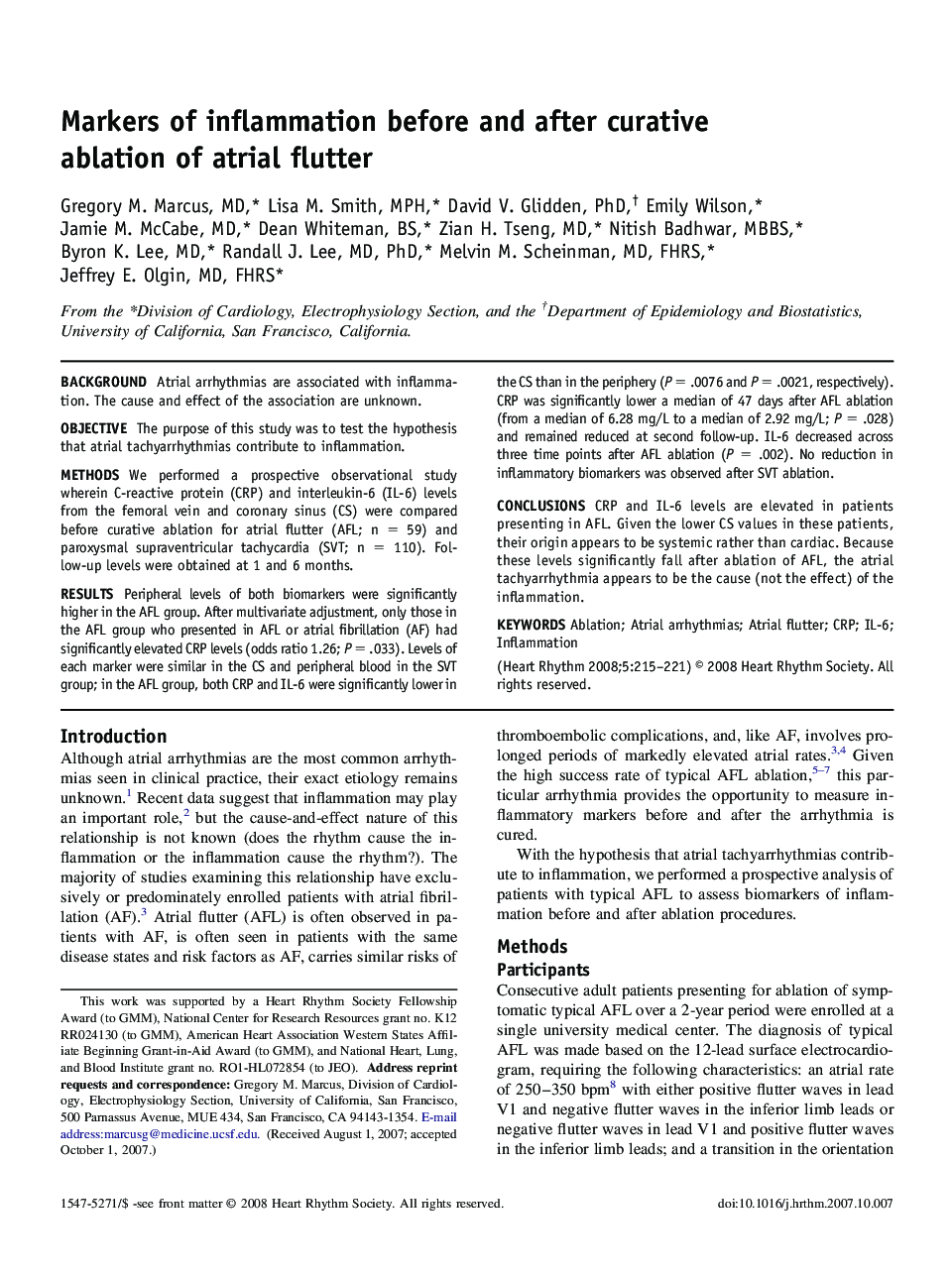| Article ID | Journal | Published Year | Pages | File Type |
|---|---|---|---|---|
| 2924507 | Heart Rhythm | 2008 | 7 Pages |
BackgroundAtrial arrhythmias are associated with inflammation. The cause and effect of the association are unknown.ObjectiveThe purpose of this study was to test the hypothesis that atrial tachyarrhythmias contribute to inflammation.MethodsWe performed a prospective observational study wherein C-reactive protein (CRP) and interleukin-6 (IL-6) levels from the femoral vein and coronary sinus (CS) were compared before curative ablation for atrial flutter (AFL; n = 59) and paroxysmal supraventricular tachycardia (SVT; n = 110). Follow-up levels were obtained at 1 and 6 months.ResultsPeripheral levels of both biomarkers were significantly higher in the AFL group. After multivariate adjustment, only those in the AFL group who presented in AFL or atrial fibrillation (AF) had significantly elevated CRP levels (odds ratio 1.26; P = .033). Levels of each marker were similar in the CS and peripheral blood in the SVT group; in the AFL group, both CRP and IL-6 were significantly lower in the CS than in the periphery (P = .0076 and P = .0021, respectively). CRP was significantly lower a median of 47 days after AFL ablation (from a median of 6.28 mg/L to a median of 2.92 mg/L; P = .028) and remained reduced at second follow-up. IL-6 decreased across three time points after AFL ablation (P = .002). No reduction in inflammatory biomarkers was observed after SVT ablation.ConclusionsCRP and IL-6 levels are elevated in patients presenting in AFL. Given the lower CS values in these patients, their origin appears to be systemic rather than cardiac. Because these levels significantly fall after ablation of AFL, the atrial tachyarrhythmia appears to be the cause (not the effect) of the inflammation.
